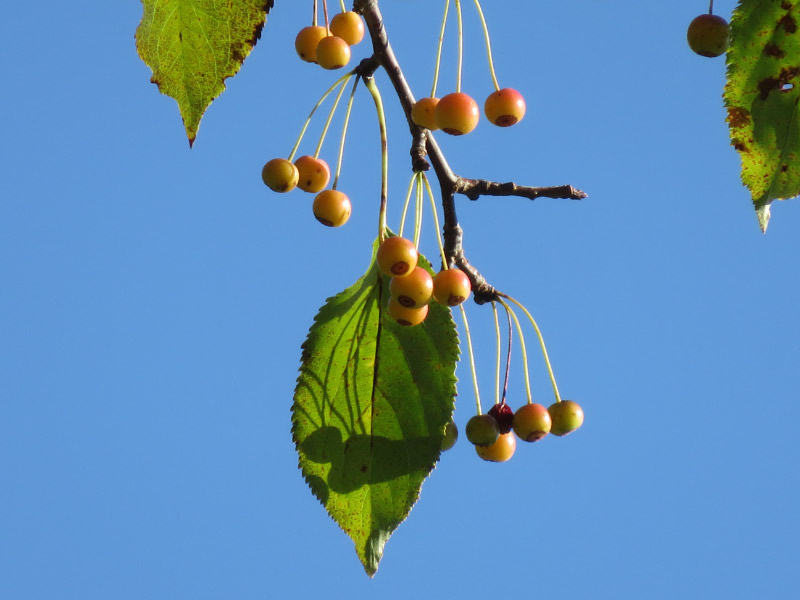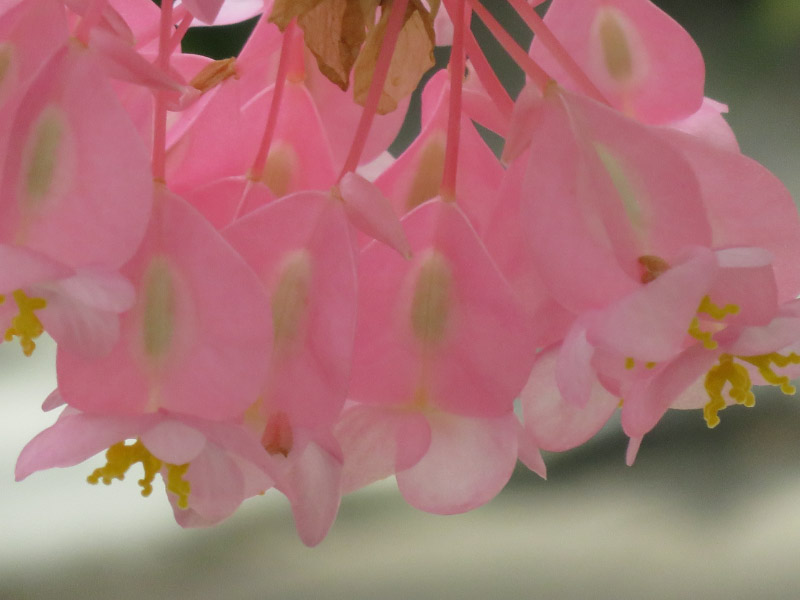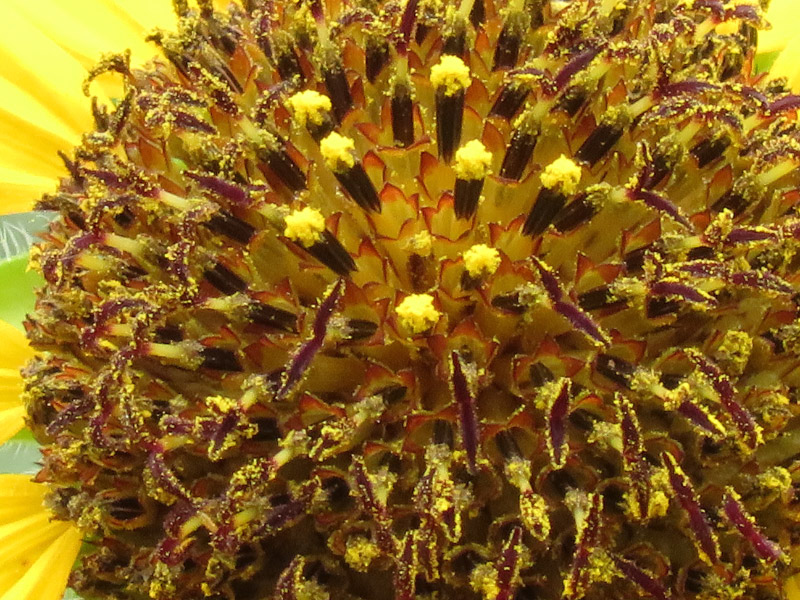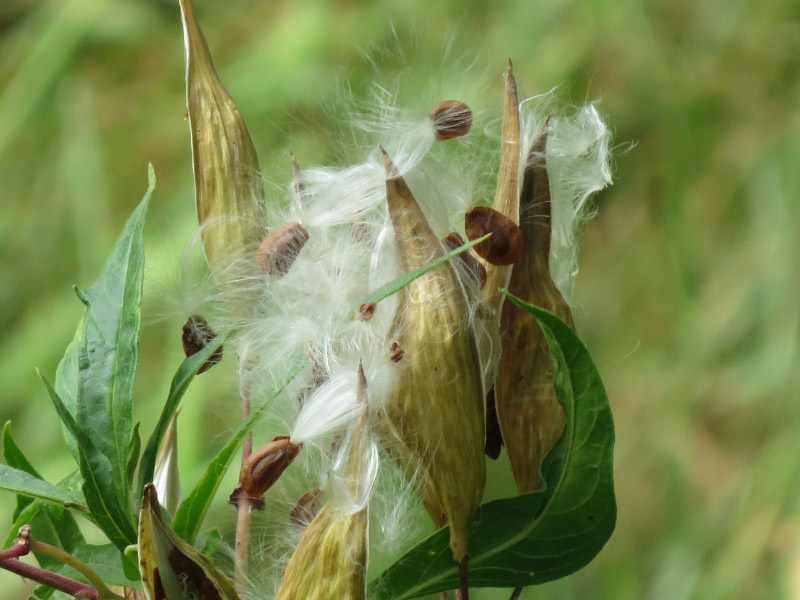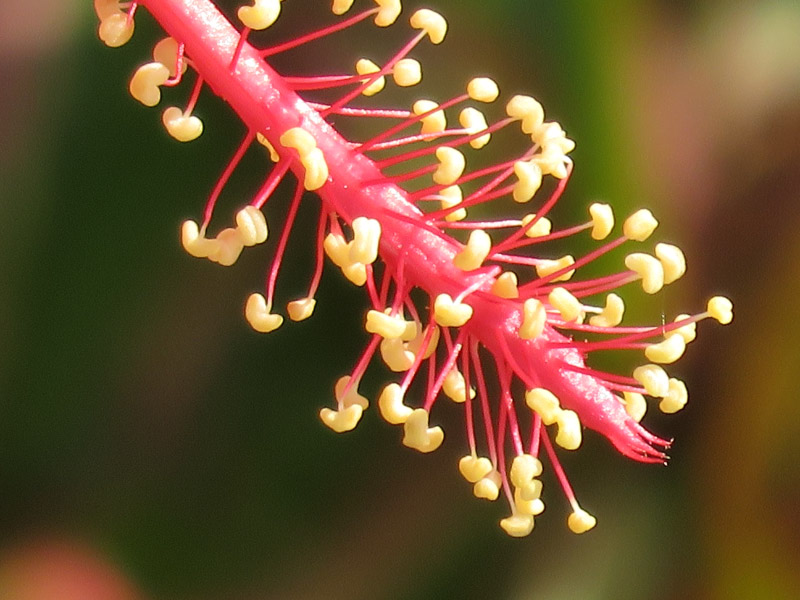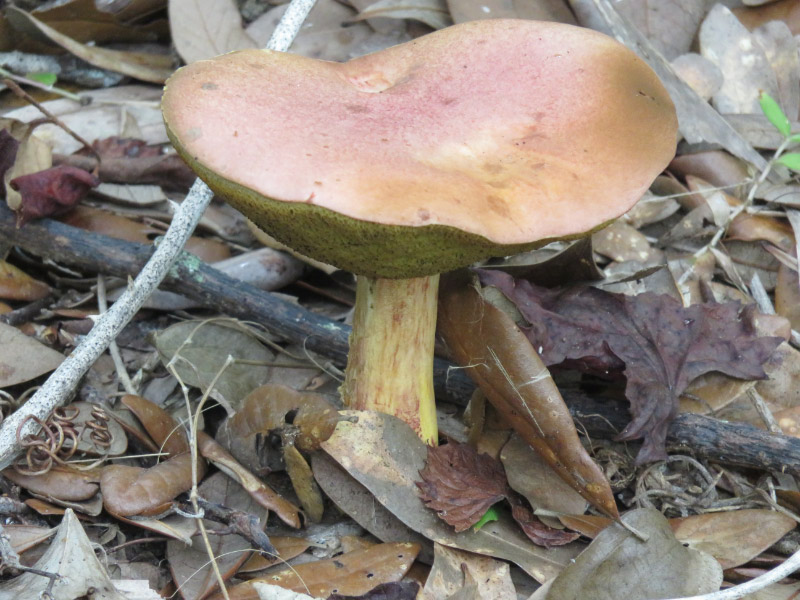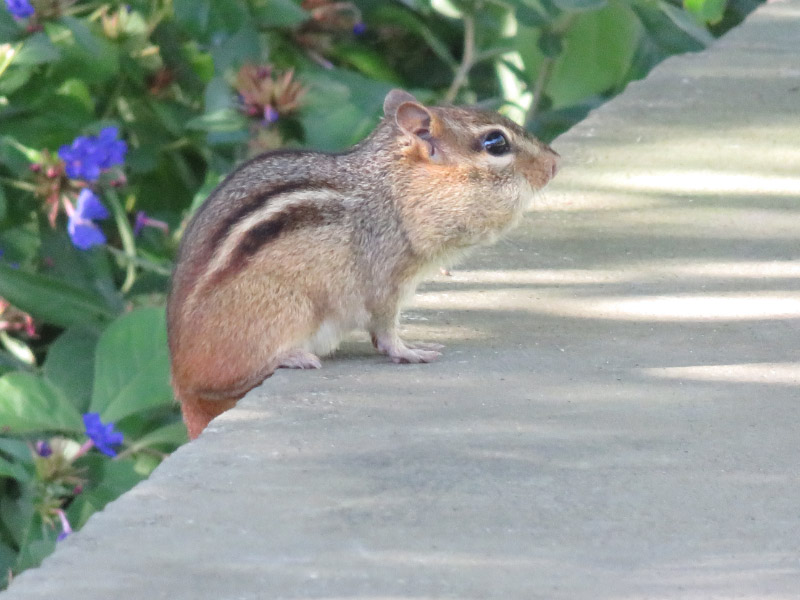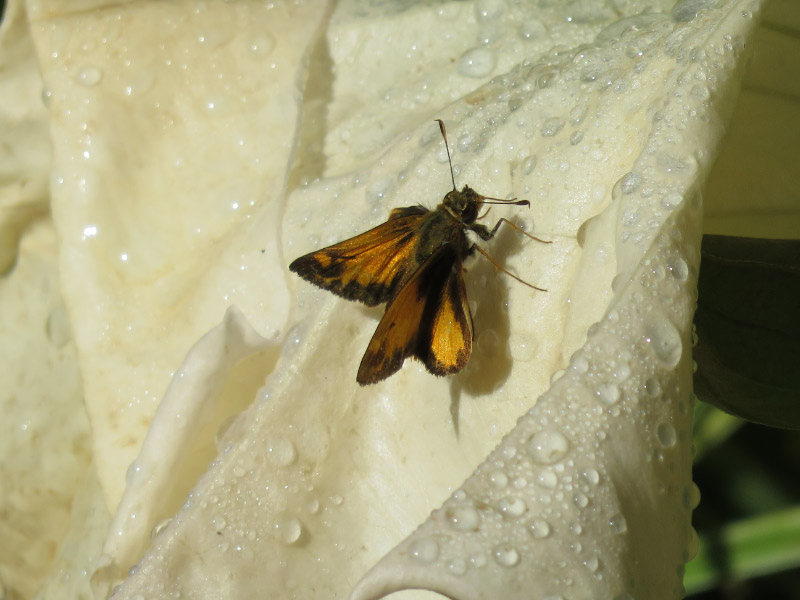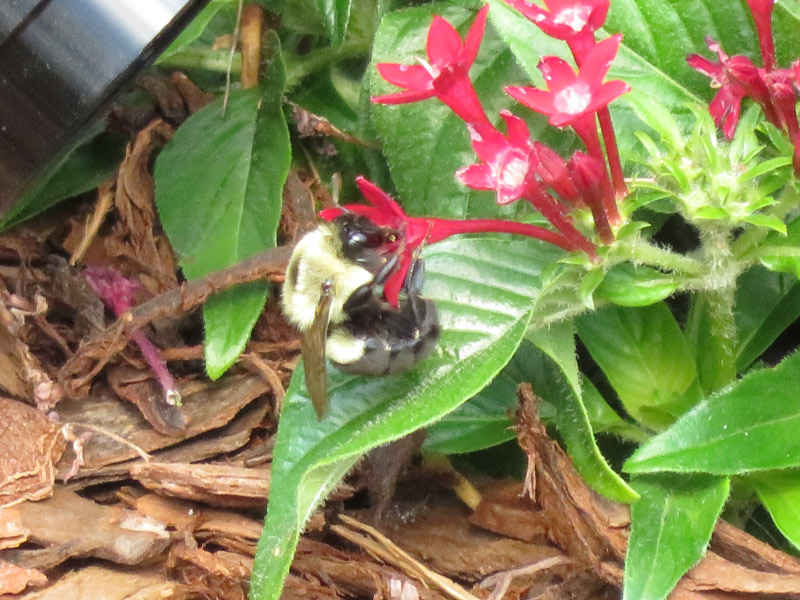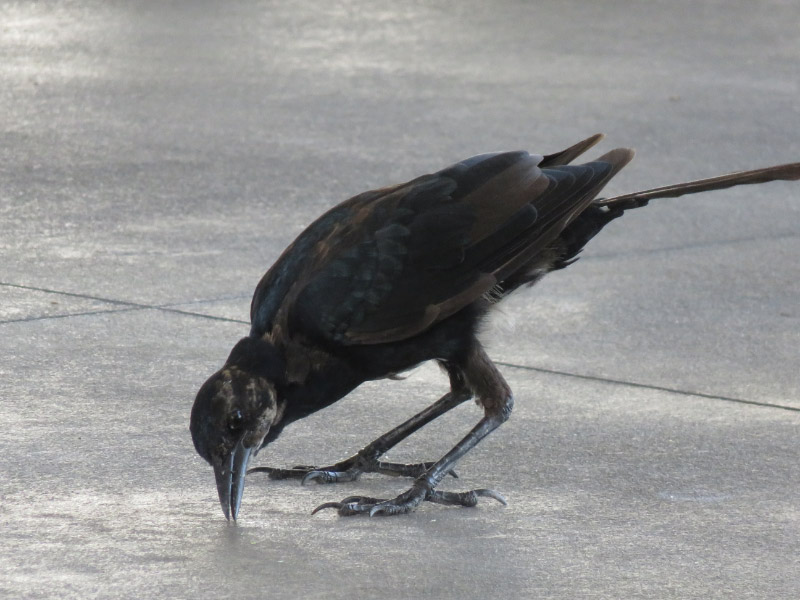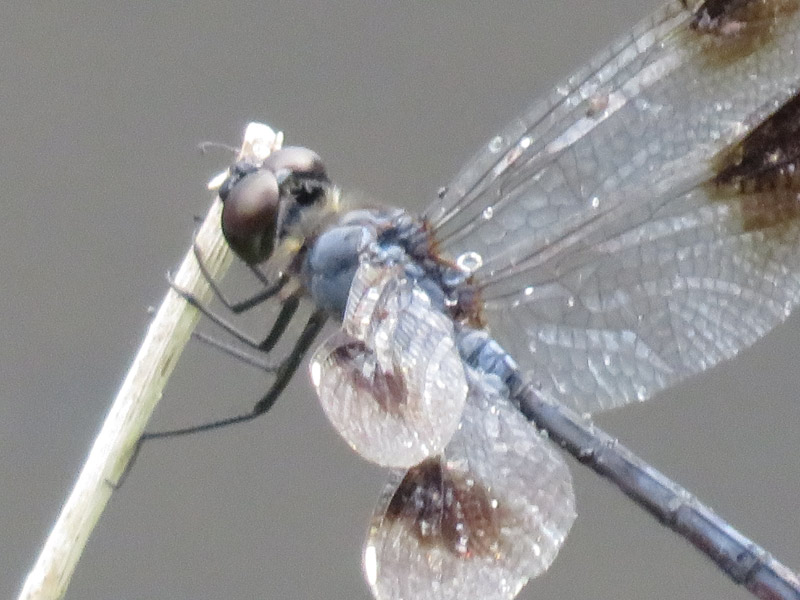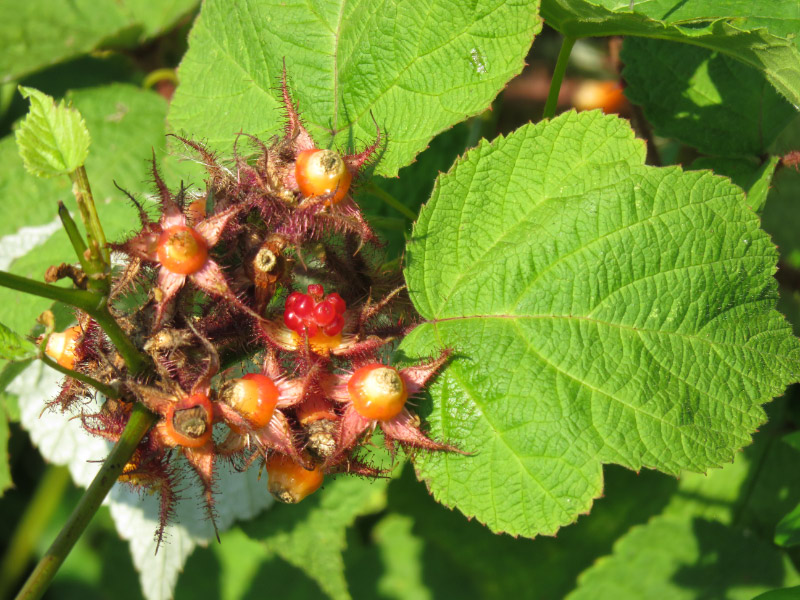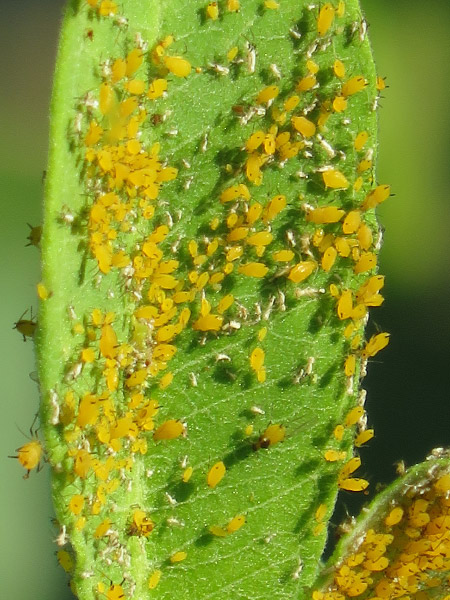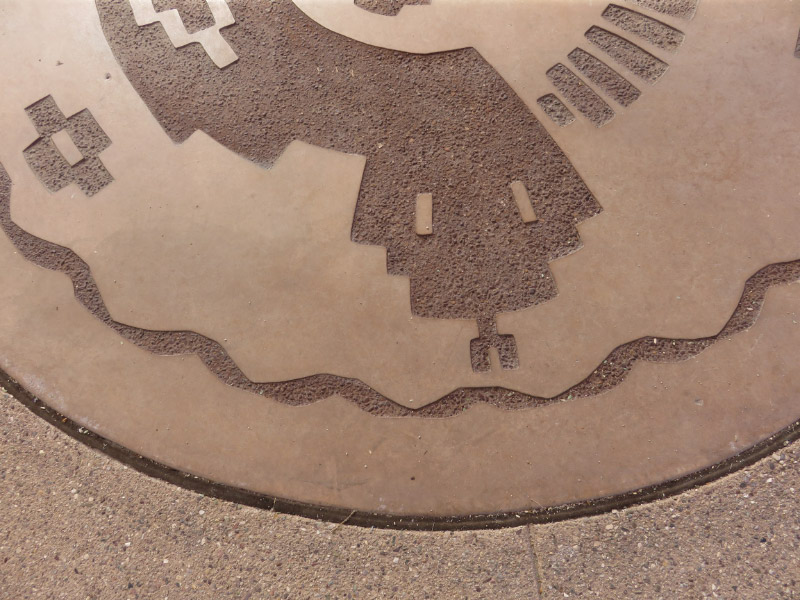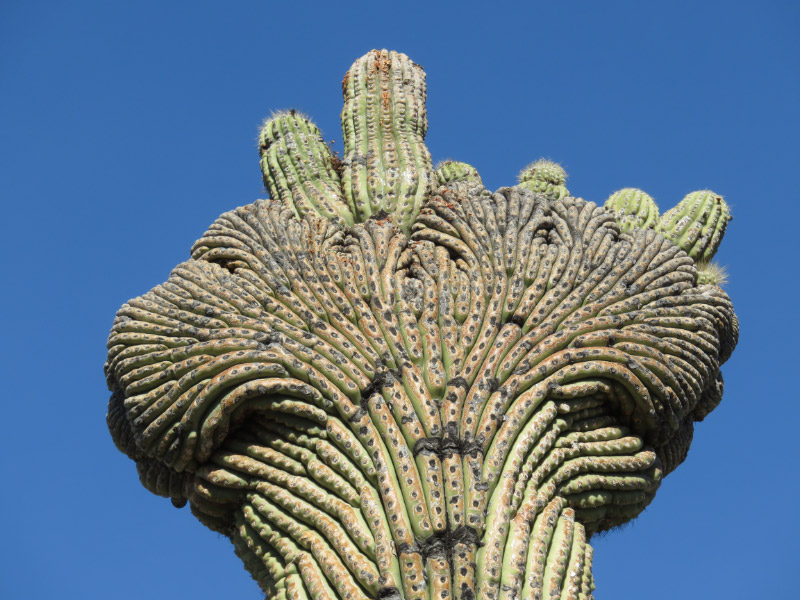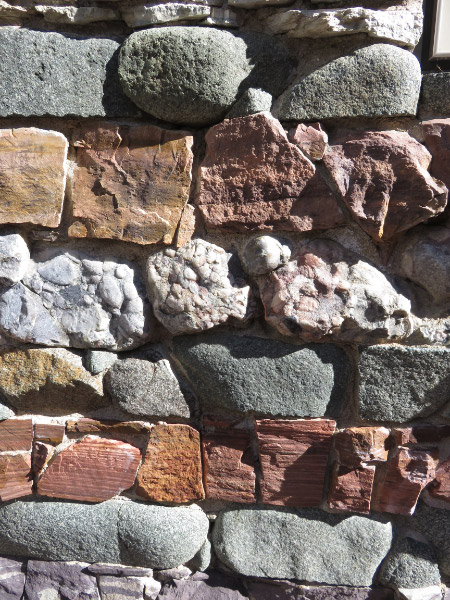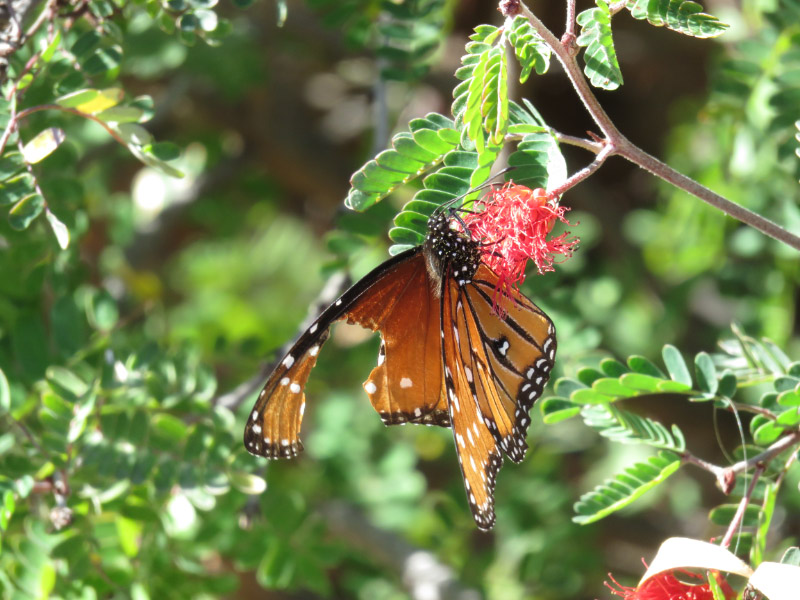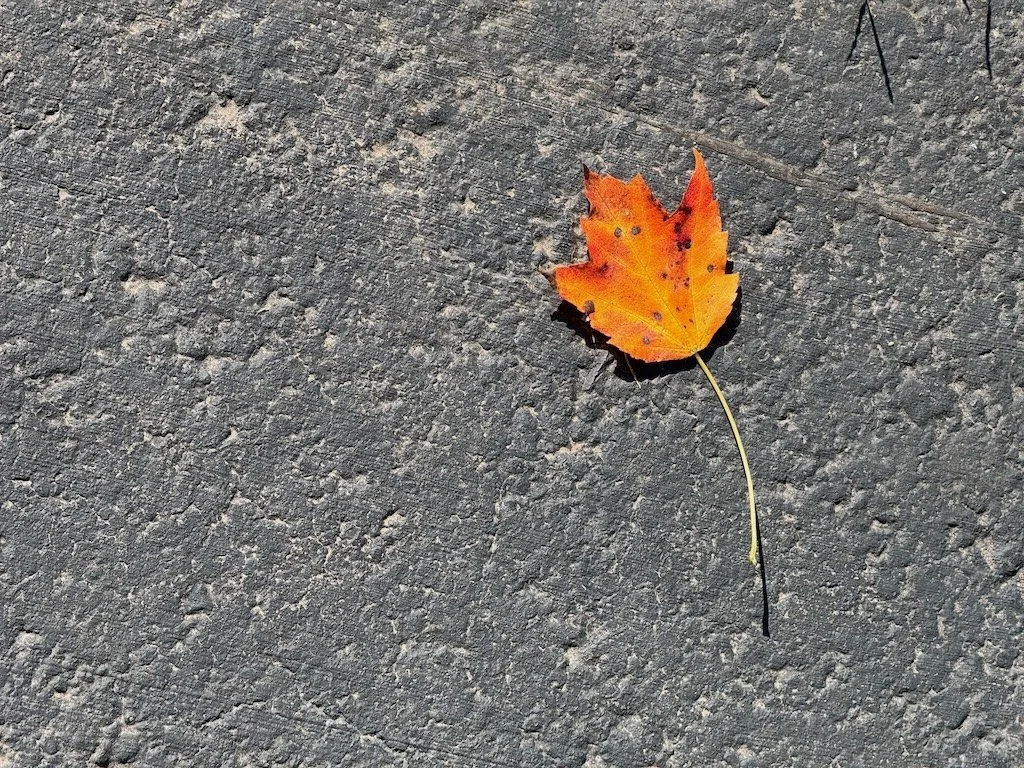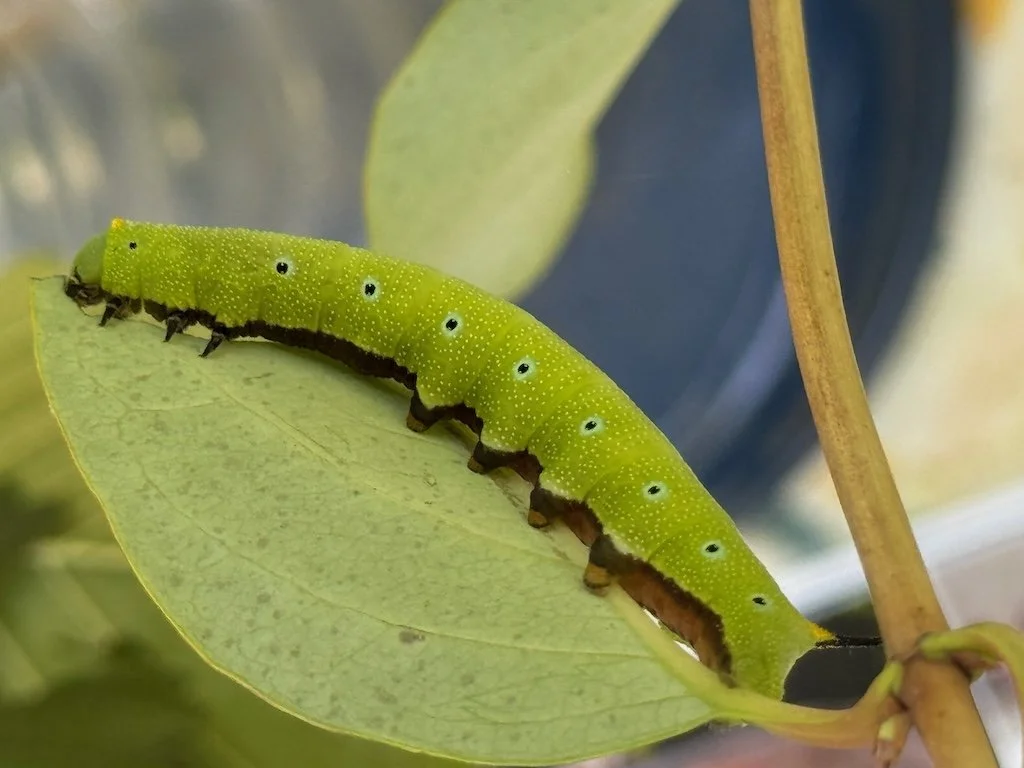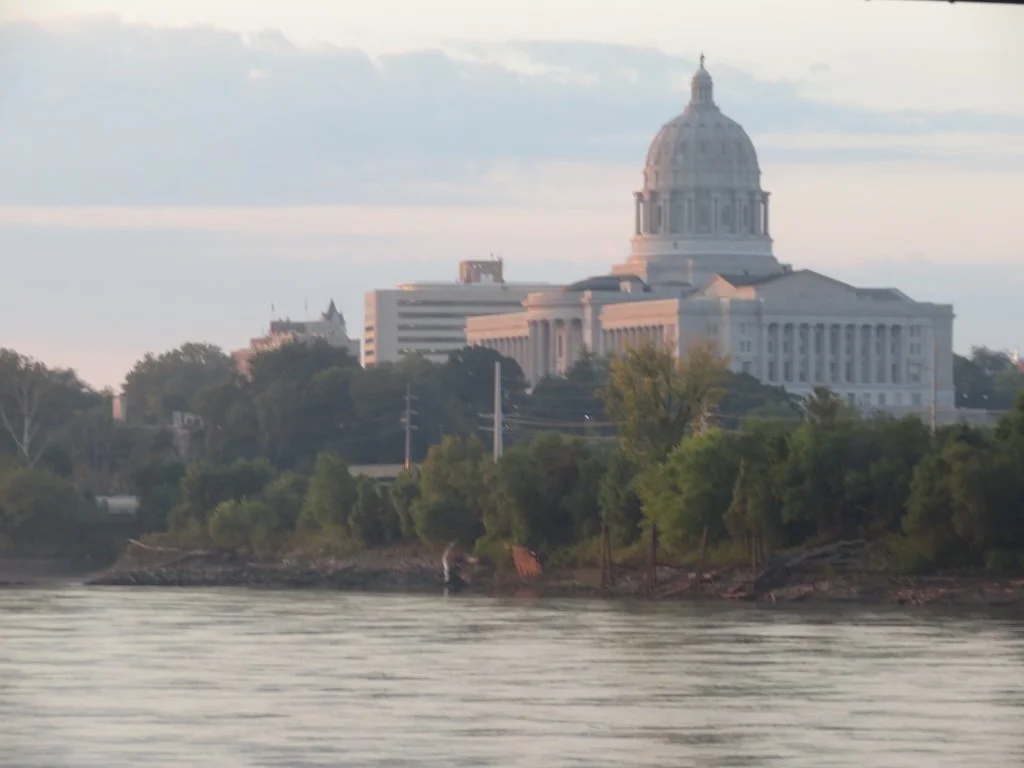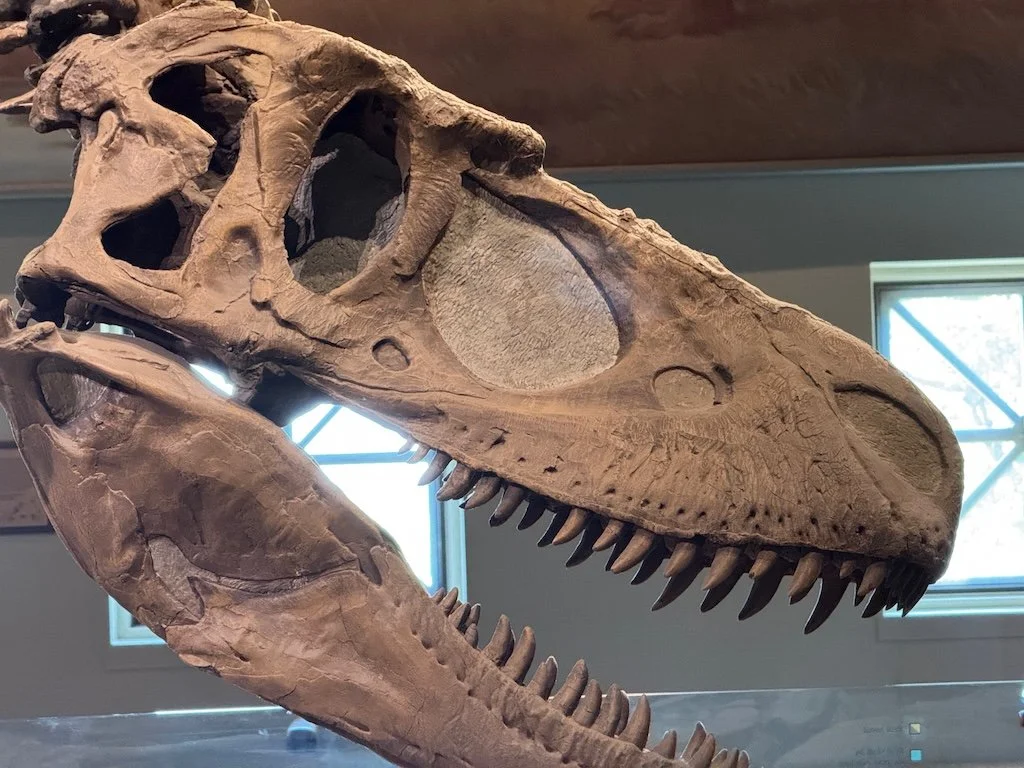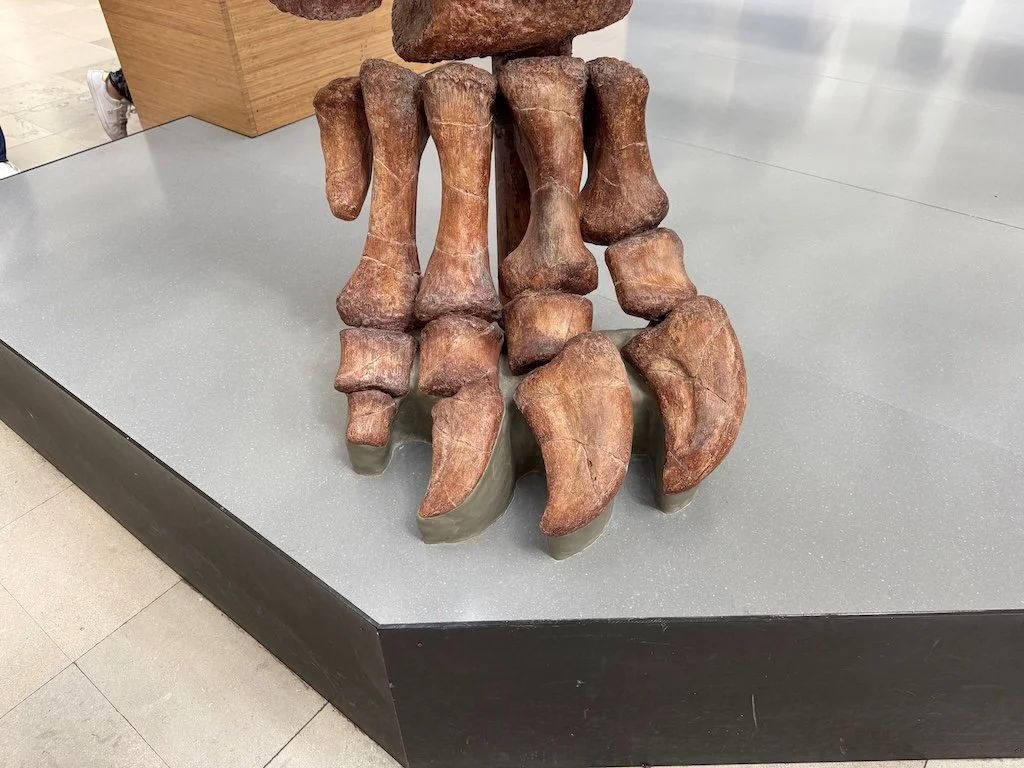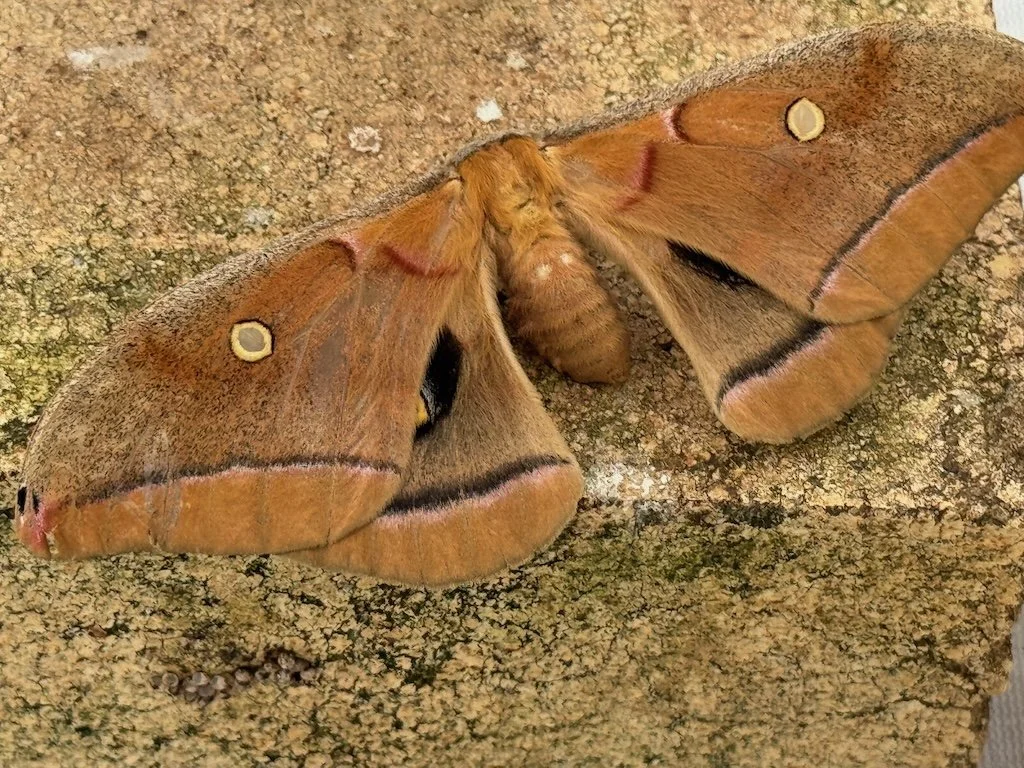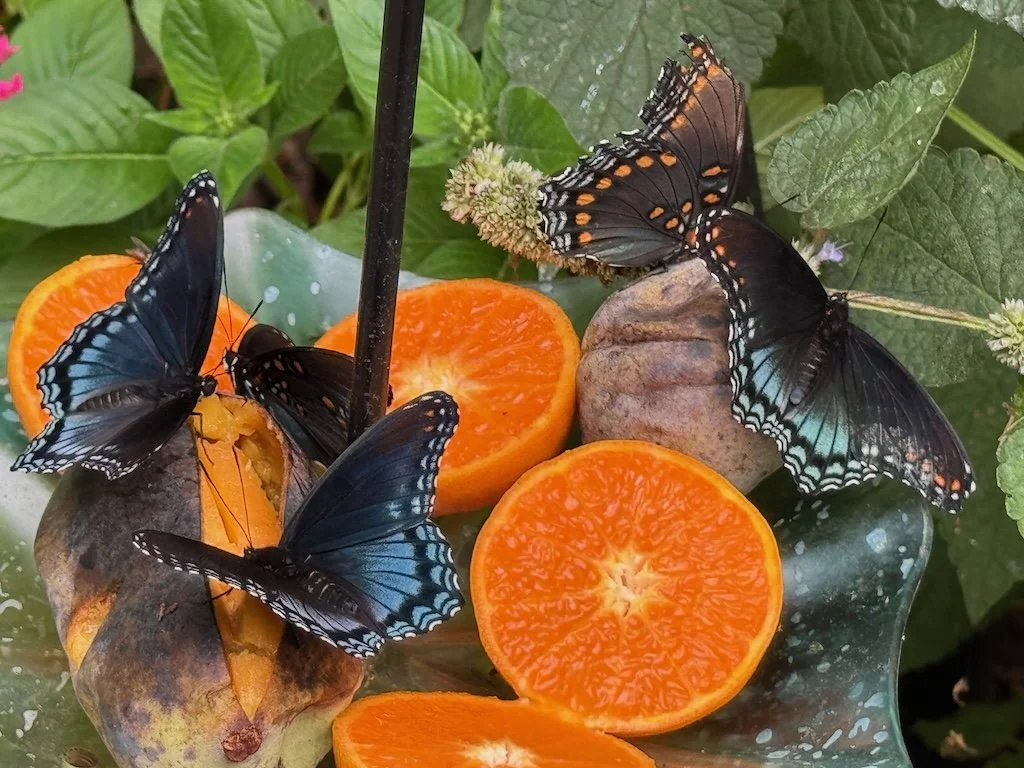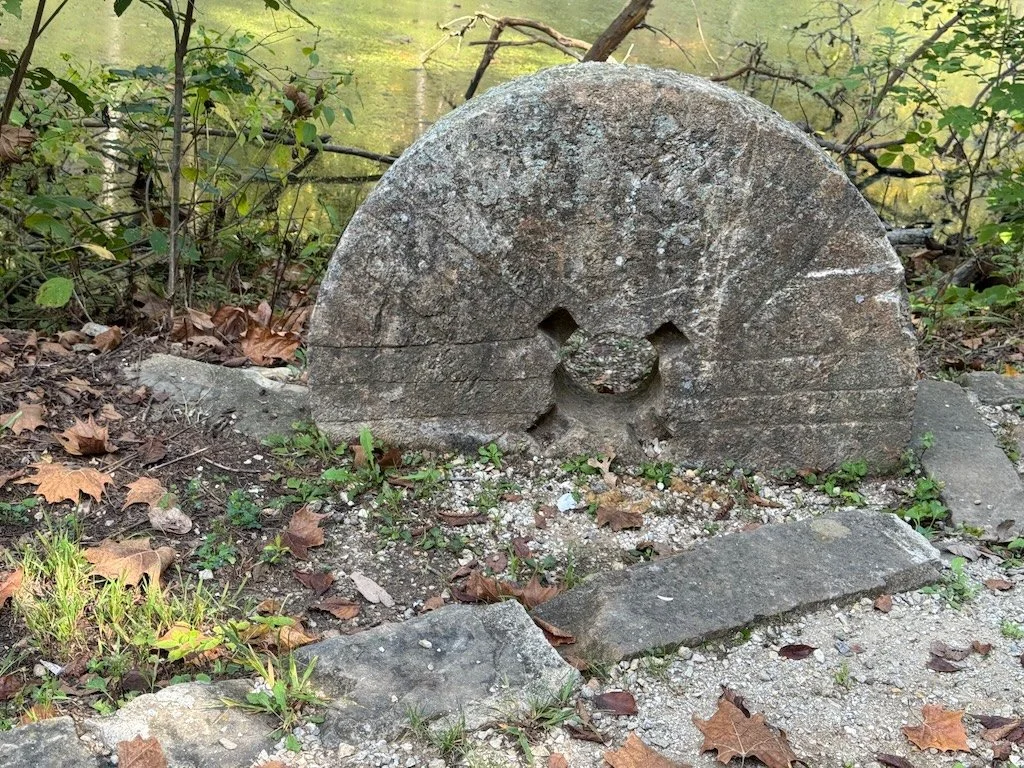Like last month – I selected images this month where I used the zoom on my camera past the 30x that the lenses do. The digital zoom goes to 120x. I’m often surprised by what I am able to ‘see’ via the camera.
For example – the green eye of this Cabbage White Butterfly on blooming mint. It misses being a great picture because of the errant piece of grass and the other mint plants in the foreground…but it works for identification. Speed is important when trying to photograph anything that can move (like insects) so I opt to get some kind of picture rather than a perfect one!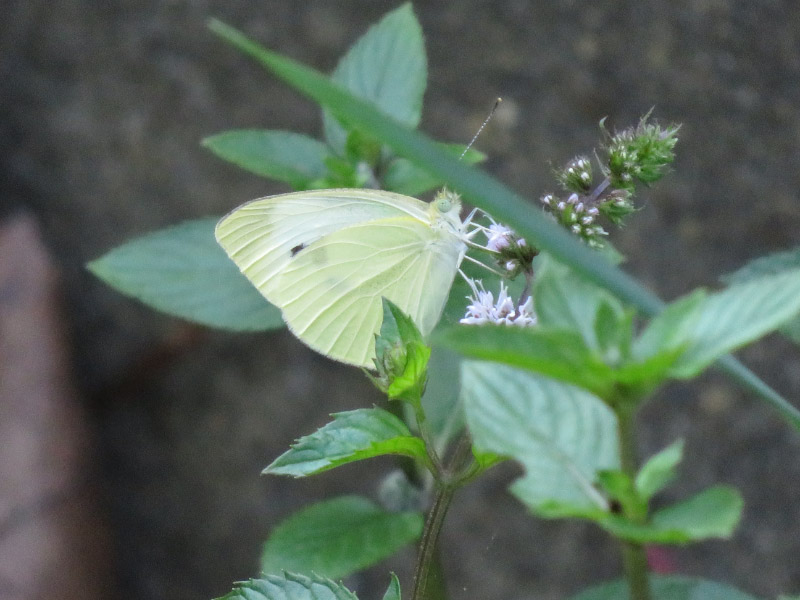
Black eyed susans from early in August. These three seemed to go together – further back in the garden so zooming was the only way to photograph them without stepping on other flowers. I like the curly petals of the one in the foreground.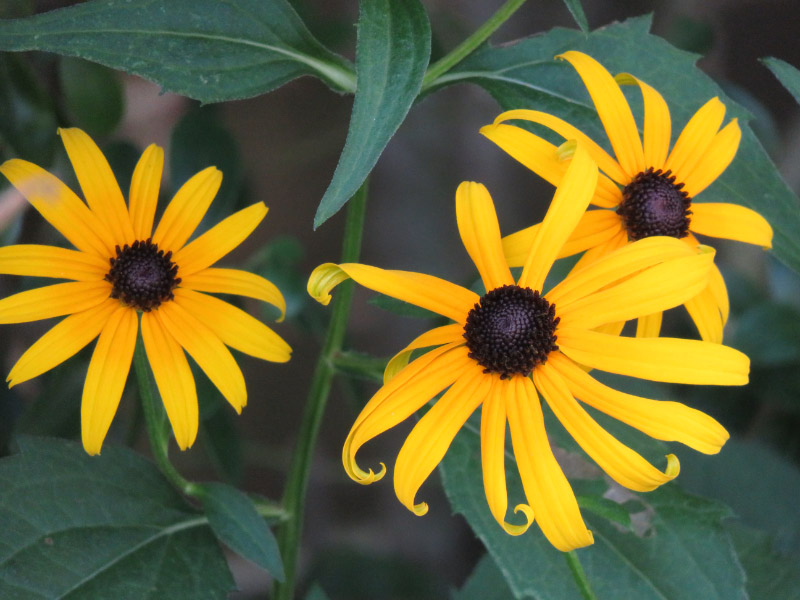
Early in August the trees looked like we were going to have an early fall. This is a zoomed shot of the tulip poplar from my office window – across our backyard. Now most of the leaves that were yellow have fallen and there don’t seem to be many new ones – yet.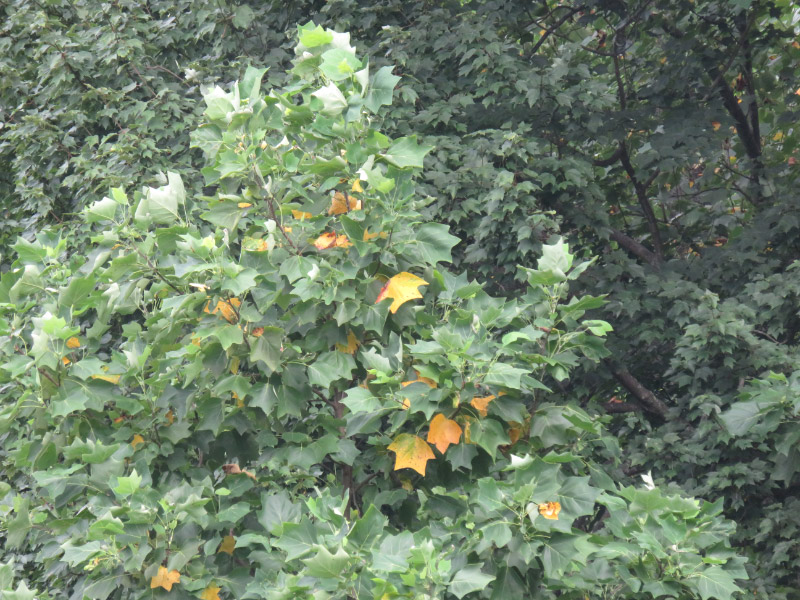
The sycamore keeps getting new leaves all through the season while the other leaves keep getting larger and larger. This is a new leaf that I took from my office window. I like the blurred background behind the leaf that comes with the lens focusing on the leaf.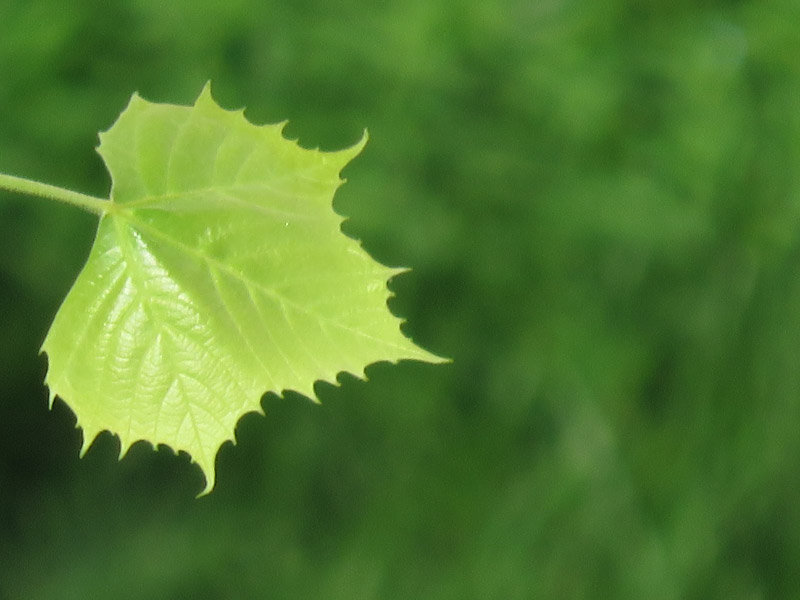
Sometimes I like to use the zoom to get my shadow out of the picture. This is a mature seed pod on a sweet bay magnolia (at the Howard County Conservancy’s Mt. Pleasant Farm).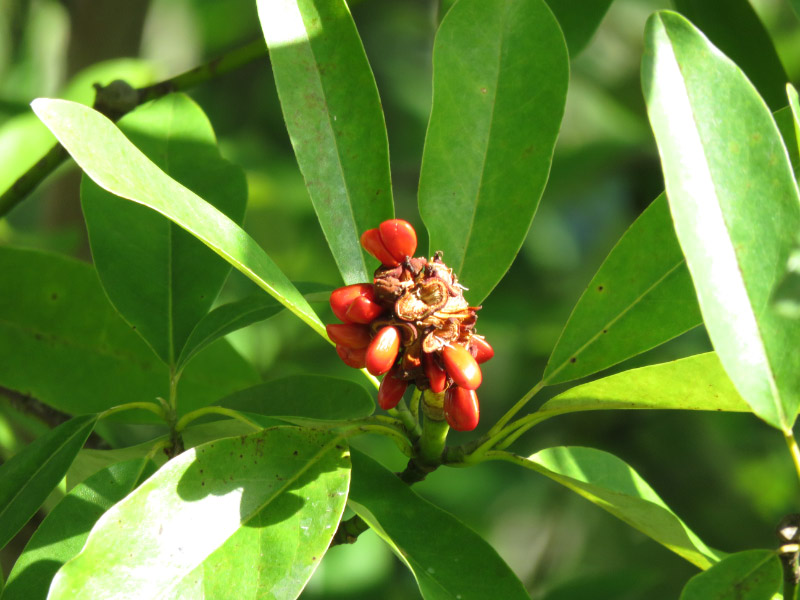
In the Honors Garden at Mt. Pleasant Farm, the algae mat at the edge of the water feature was attractive to bees.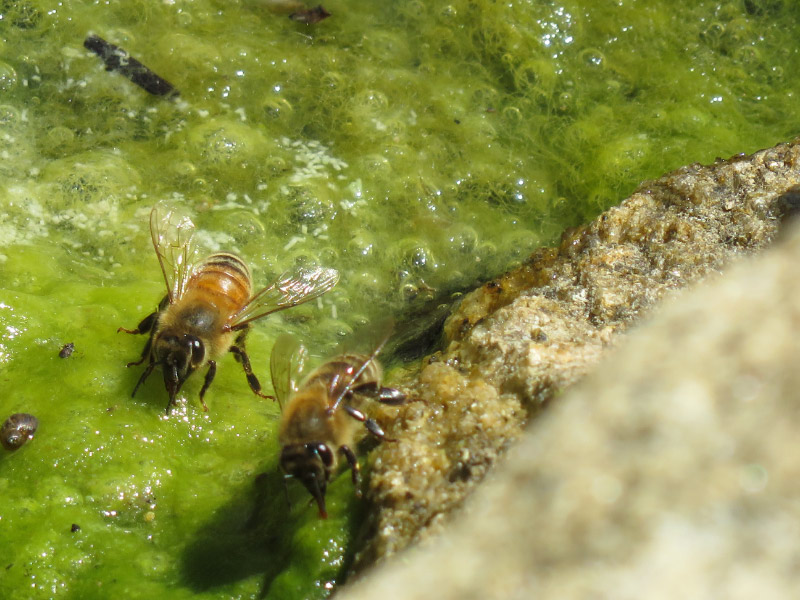
It also was a good place to look for small plants. I like the red edges of these small leaves. I was able to stand comfortably on the walkway to take my pictures rather than leaning over the small pond.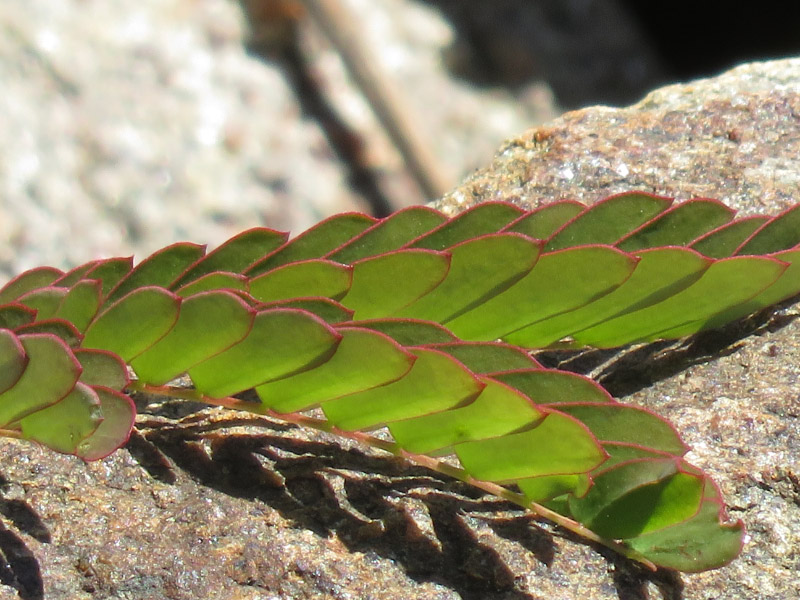
Birds are easier to photograph if I can stand further away. This male goldfinch was tearing a zinna flower growing on my deck apart with a vengeance.
Sometimes the flowers themselves are my topic. I liked the curves of the petals and the black background in this zoomed image.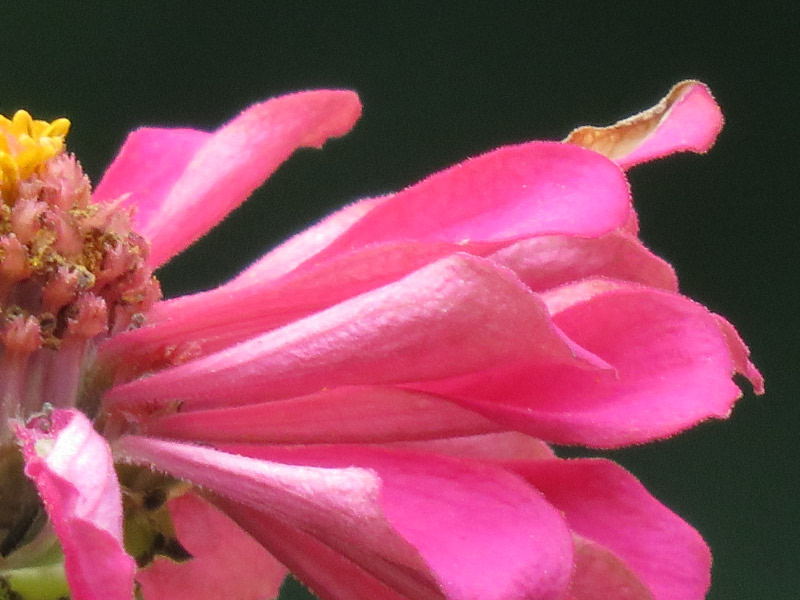
The butterfly has not clue I was even around. Using the zoom on the camera is a great way to see insects better than you can with just your eyes.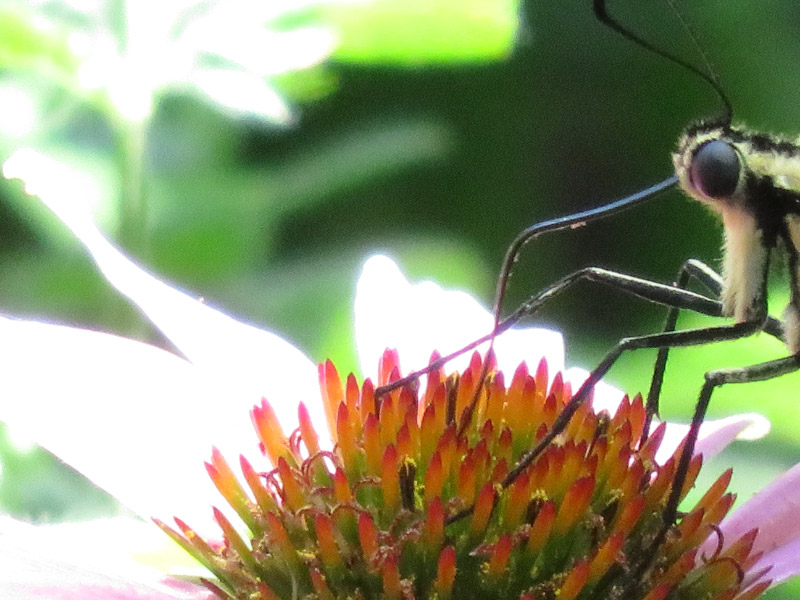
What about this fly on a milkweed leaf? I was surprised by the red eyes.
Took two pictures of an insect pollinating a chicory flower. The color on the head and thorax seemed to glitter in the sunlight! But the pictures are not quite good enough to key out what it is.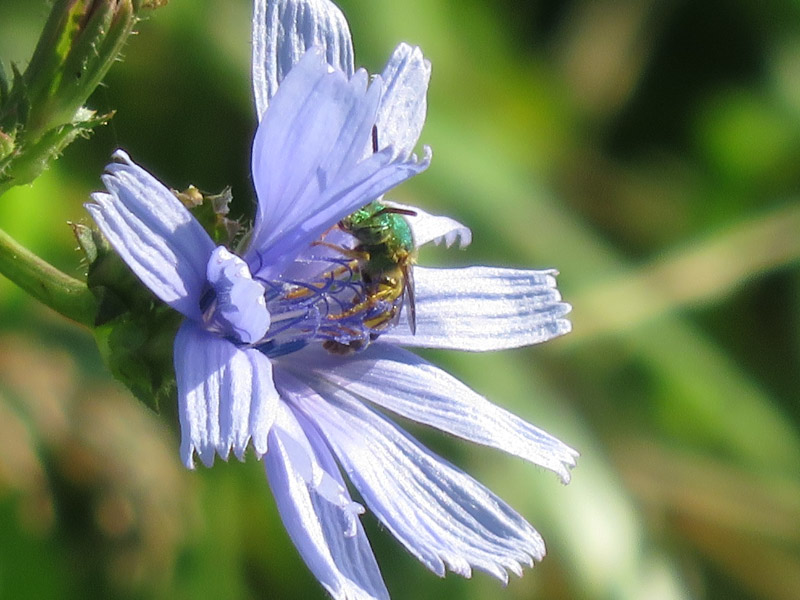
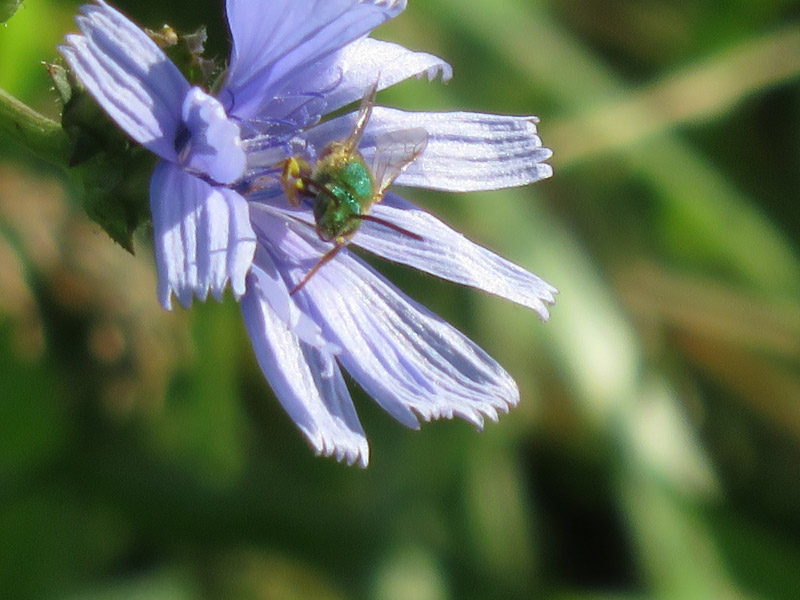
That’s enough….I may have gone overboard for the zooming post this month but I had so many images to choose from!
